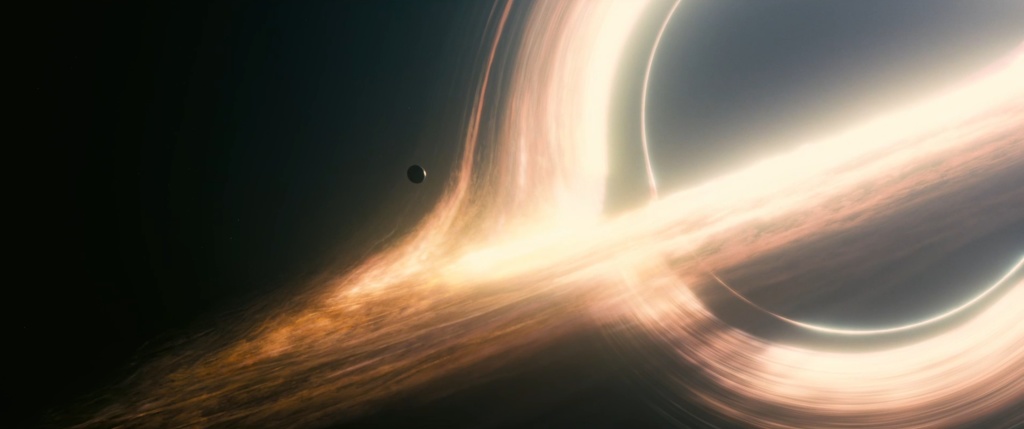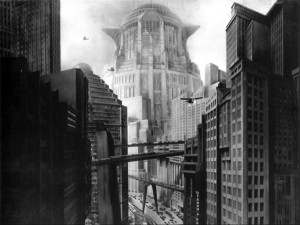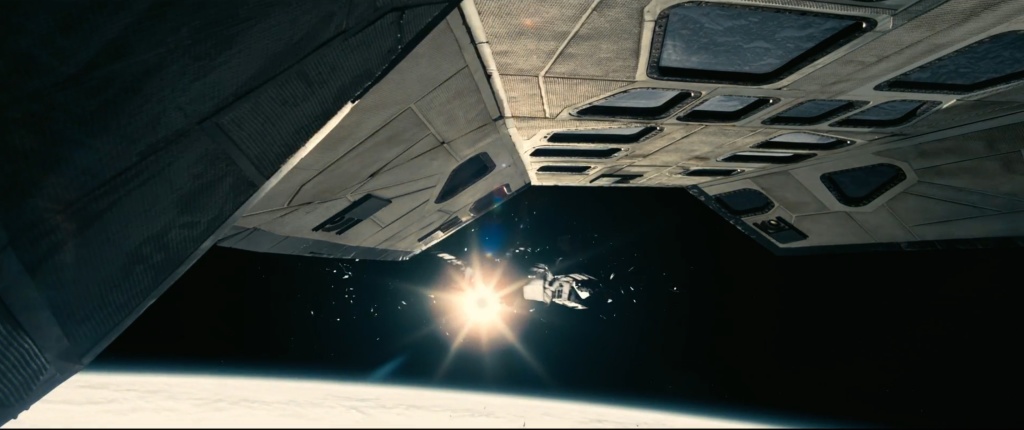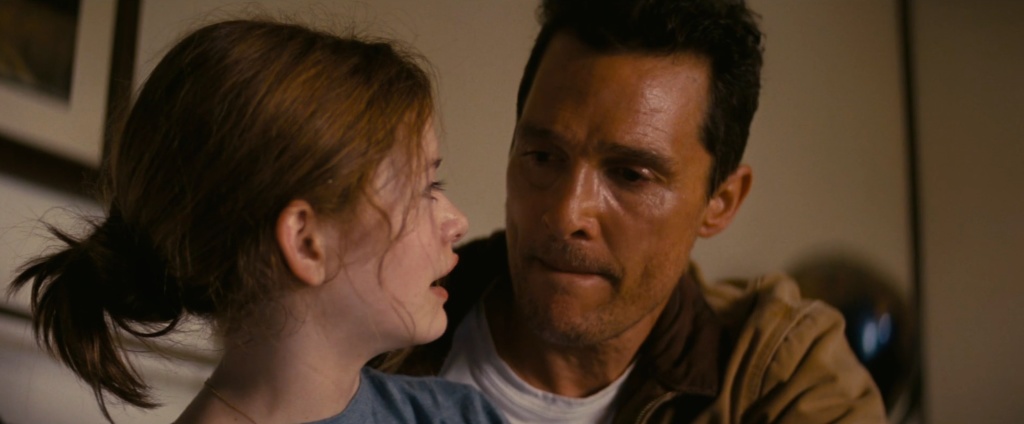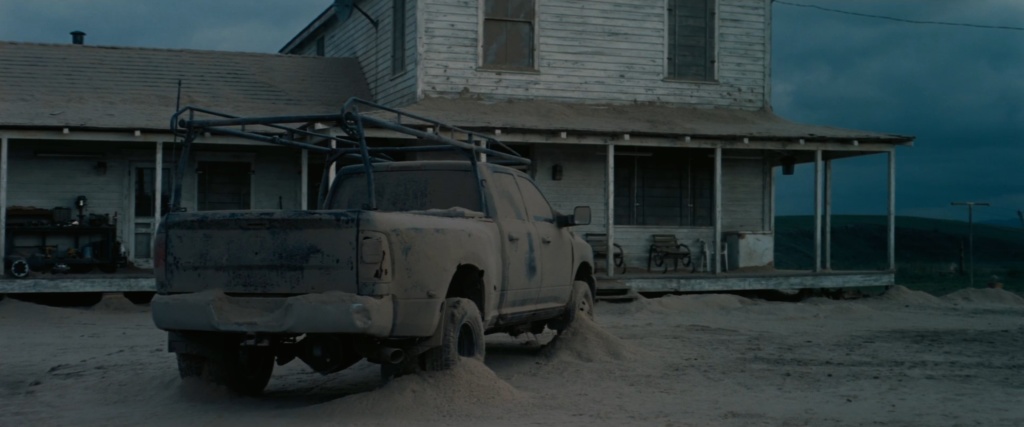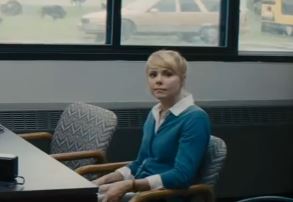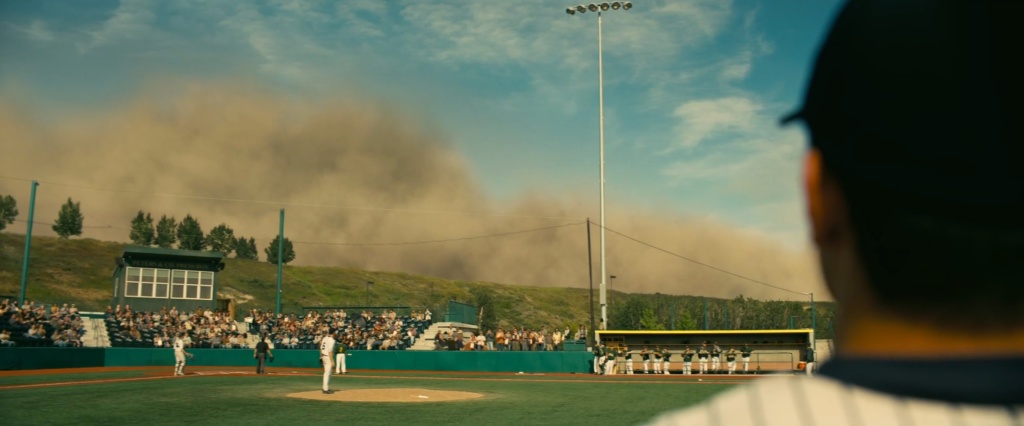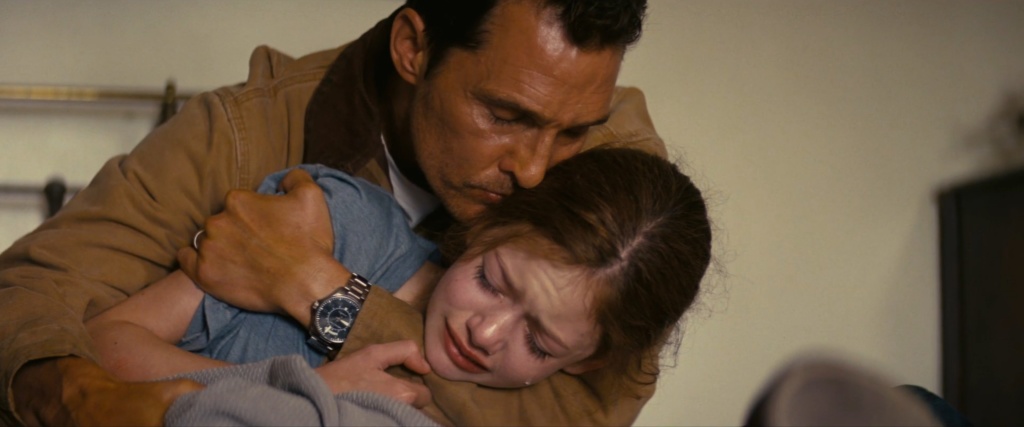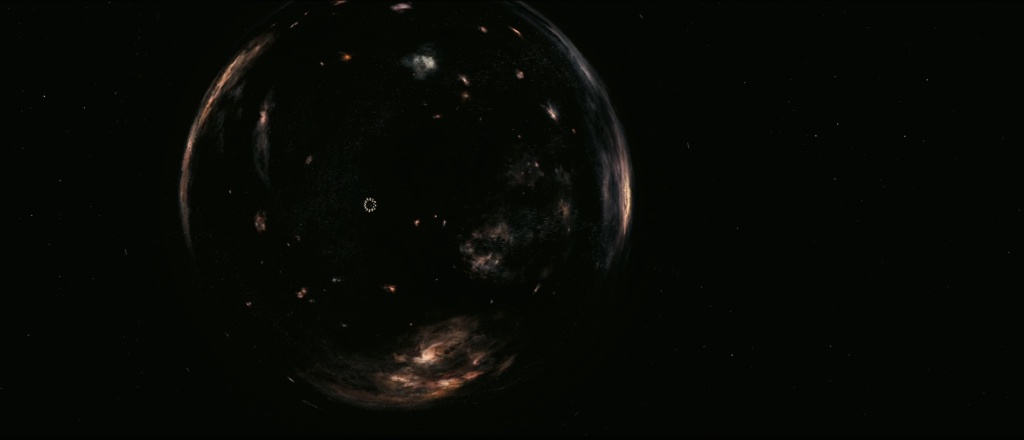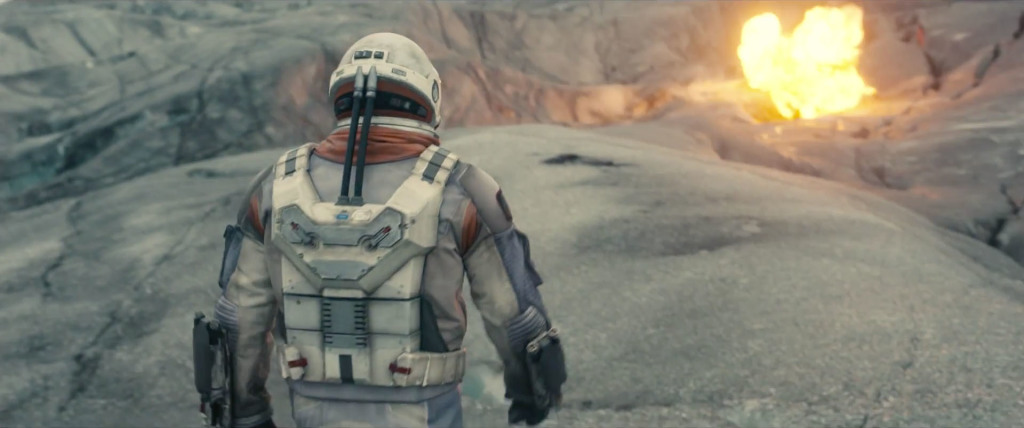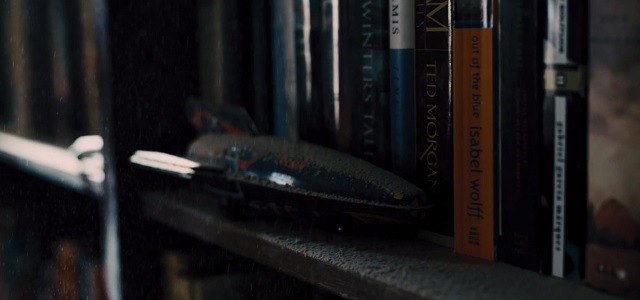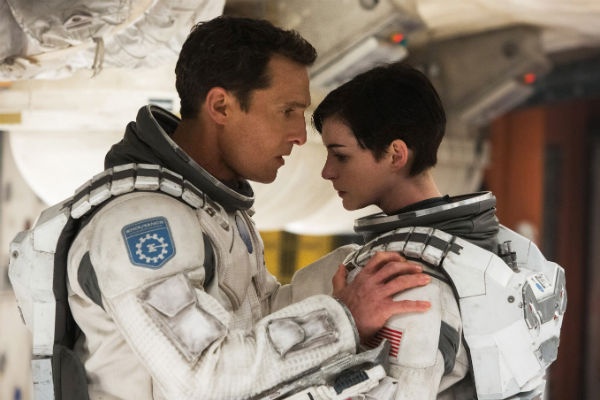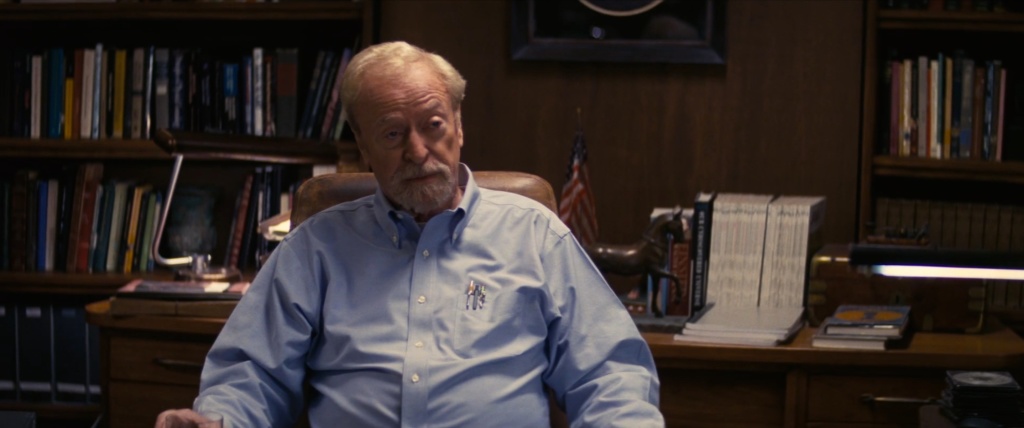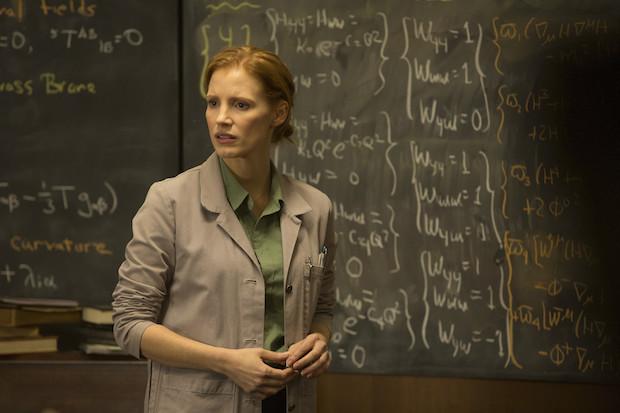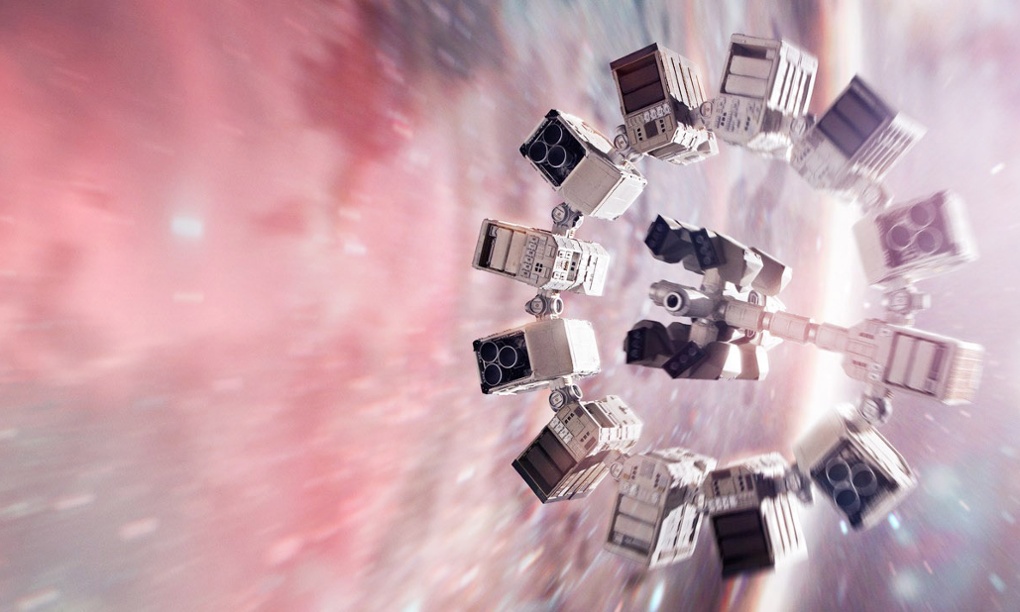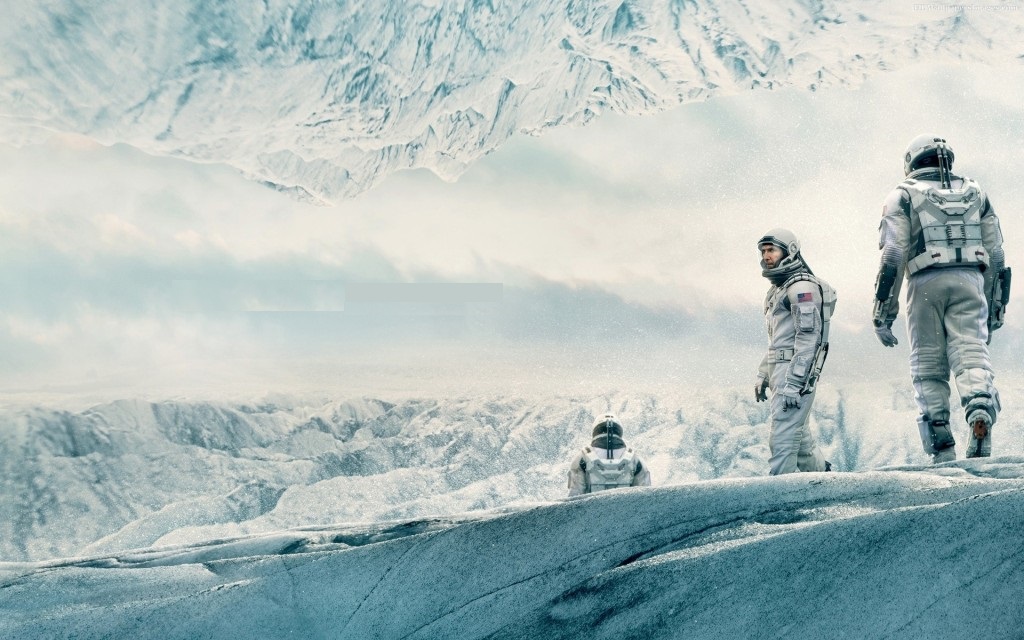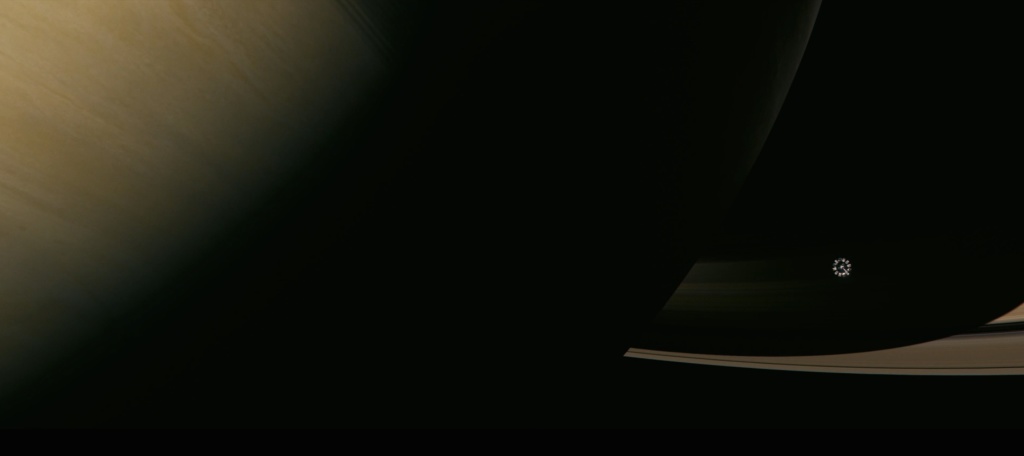Interstellar
I here reprint my original review of INTERSTELLAR, as this film is a masterpiece well worth revisiting.
***
Directed by Christopher Nolan; Written by Jonathan & Christopher Nolan; and starring Matthew McConaughey, Anne Hathaway, Michael Caine Mackenzie Foy, Jessica Chastain.
INTERSTELLAR by Chris Nolan is certainly the best science fiction film, and is equal to the best films of any genre, I have ever seen. I would list SEVEN SAMURAI by Akira Kurwasawa as superior to it, and CASABLANCA by Michael Curtiz or THE BIG SLEEP by Howard Hawks, but the mere fact that I am making the comparison with these giants among cinematic masterpieces should tell you of the high regard in which I hold this particular work.
I hold it INTERSTELLAR high regard not just as a film but as a science fiction film; and more than this, as a serious or ‘hard’ science fiction film, not merely a space opera or fantasy. Like grand opera, Hard SF is an exacting and highly disciplined form of storytelling where the slightest deviation from the strictures of audience expectations mars or even ruins the story. Hard SF is hard.
Before speaking of the film itself, let me make a comment about science fiction films in general, so that my high praise will be seen as fair-minded and not flattery.
To be well told, a story must expertly use the elements of plot, pacing, character arc, theme, tension and resolution to capture the imagination, reflect the truth, and touch the heart. In addition, the film must use the elements of imagery, light and composition, sound effects, music, and the mysterious thing called stage presence which radiates from the actors like an aura, and the acting in turn has elements of diction, body language, costuming and make up and so on. It is simply more difficult to tell a good story with a film than with a book, but when it is well told, the result is more vivid to the senses.
For its part, the reader of a book or audience of a film must, consciously or subconsciously, agree to the customs and conventions of story-telling form. A simple example of this is that we in the audience make a distinction between background music which cannot be heard by the characters and music coming from a prop radio or piano which can.
To be well told, a science fiction film must expertly use all these elements, and yet there is another element above and beyond these, and there is an additional convention to which the audience, if only tacitly, must agree if it is to enter into the tale.
A science fiction audience is expected to pick up on clues and indirect hints implied by the dialog or props or the reactions of the characters, and from those clues to extrapolate a world in the future that is not like our world, either in one or in many ways.
The viewer is being asked not to imagine a make-believe story in this, the real world of here and now, but to imagine a make-believe story in a make-believe world, the world of strangeness far away and distant in the direction of tomorrow.
Mainstream audiences are asked to believe in a different story, but which, no matter how unlikely, could take place in our world. Science Fiction audiences are asked to believe in a different world, with its own rules that are not our rules.
But here is the crux: a disciplined Science Fiction story, called Hard SF or Campbellian SF (as John W Campbell, Jr, influential editor of Analog magazine is the first to have formulated the definition), asks the audience to believe in a world whose rules, albeit different, could be extrapolated from our own. In Campbellian SF the scientific disciplines, applied technology, and the laws of nature by which they operate, violate no currently known rules of science, but are speculations, either sober or wild, which have a reasonable footing in our own world as we know it.
Soft SF is where the speculation has little or no relation to currently known science; Space Opera is an adventure tale which uses science fiction props and settings, but with no actual scientific speculation; Fantasy takes place in worlds where the rules of the world are like those in which our pre-scientific ancestors believed, a world of magic, elves and unicorns, witches and pagan gods. Elf Opera is one were the props and settings of Fantasy are used, but the magic is treated as technology, lacking any glamour, and provoking no awe.
Most science fiction films from Fritz Lang’s METROPOLIS onward used every trick in the stage magician’s black bag to supply the imagined worlds of tomorrow with props and settings, everything from miniatures and matte paintings on mirrors to modern computer graphics to produce the visual splendor of the world of tomorrow.
The unparalleled success of STAR WARS brought the science fiction film into the respectable mainstream, but unlike its predecessors, such as THE DAY THE EARTH STOOD STILL or FOBIDDEN PLANET, the emphasis was on the pageantry and special effects. It was a space fairy tale and meant to be understood as such, taking place in a galaxy long, long ago and far, far away.
Those who criticized STAR WARS for depicting space combat as World War One aerial dogfights as ships with wings make roaring banked turns in a vacuum and making the Kessel run in under twelve parsecs were not getting into the spirit of the thing: one might as well criticize THE HOBBIT for portraying a dragon as a flying and fire-breathing monster instead of a twelve-foot long crocodile. When the rules of fairy tale apply, the critic must use the yardstick of fairyland to judge its worth; when the rules of Hard SF apply, the critic must use the yardstick of Analog Magazine to judge its worth.
If the work of one sort of story does not appeal to you, that is, if your taste is such that even the best executed work using the yardstick of fairyland or Analog fails to entertain you, then depart from the genre with all goodwill. Our tales are not for you.
But if a story, even one for which you feel great fondness and for personal reasons hold to your heart, falls short of the yardstick of fairyland, it is bad fairy tale, even if it is a good story on other grounds; and likewise if it falls short of the Campbellian yardstick, it is a bad science fiction story, even if it is a good story on other grounds.
So even those critics who do not like science fiction stories generally, if they are fair-minded enough to separate their personal tastes and sentiments from the strictures of storytelling, will allow INTERSTELLAR to be not just a good story, but a great one.
The Campbellian yardstick, if I may rephrase it, goes like this: if the dialog or props drop a hint that requires the reader to make a leap of imagination, and envision the world of the story as different from the current world, and those leaps are possible, even if unexpected, extrapolations of the current day, the work is sound science fiction.
This is not different in kind from the little leaps of the imagination made by mainstream readers in the shallower and slower waters of their mainstream books: the reader there assumes the character who talks like Bill Sykes is a murderer, and like Oliver Twist is an orphan, and that leap of assumption is meant by the author for the reader to follow him along.
But only in science fiction are we leaping in our imagination so that a line like “The door dilated” implies technology as we currently do not have, or like “Only after the figure turned its mask toward me did I realize the creature addressing me was not a human being” implies contract with alien life, or perhaps the development of robotics, or “I was seated with the other version of myself, a younger man with five cards in one hand and a gun in the other, trying to remember this poker game from the last time I was in this scene. Was I bluffing or not?” implies timespace is not what we currently think it is.
Hence, only in science fiction are we leaping from world to world.
And here I must draw a line and ask no one to step across it who has not seen the film. My main problem is that, for me, the movie worked on so many levels, as hard SF, as pure storytelling, as religious allegory, I don’t know what to say without spoiling it for the virgin viewer.
So there are spoilers in the following column, and these will diminish your enjoyment of this masterpiece going in, I assure you. Only readers who have already seen the film are allowed to read further.
The film is about a dying earth, one where a new form of microscopic life has evolved to use the nitrogen that neither flora nor fauna use, but which is the vast majority of the gas in the atmosphere. The oxygen content is actually rather low. It has created a blight on the crops, which are dying out, one species at a time, robbing the soil of nutriment, turning the earth into a vast dust storm.
The earth is dying because the spirit of man is dying. If I may quote:
“We’ve always defined ourselves by the ability to overcome the impossible …to aim higher, to break barriers, to reach for the stars, to make the unknown known. We count these moments as our proudest achievements…”
“…But we lost all that.”
There is only one slender hope, a hope which may be a false hope, an illusion, that another world might be found capable of sustaining human life, and, if found, a solution to the paradox of quantum gravity might be found so that a feasible, possible way might be created to move the millions of Earth off world and from there to the new Earth. Unfortunately, mankind has turned its back on research and development, and NASA is shut down, and the few desperate resources of the world are bent entirely to the task of producing food from an ever shrinking acreage of cropland.
But, on another level, what the film is really about is a father leaving his daughter, and going on a desperate mission he knows is tantamount to suicide, facing the stark, human costs of the Lorenz-Fitzgerald contraction of time, knowing his daughter might well be grown, or dead, if ever he returns.
In this land of dust burying long dead hopes, we see the windower Cooper, once an astronaut and ace pilot, reliving nightmares of the crash that ended his career. And he wakes to his life as a farmer. Whooping with joy, he and his two children race across the cornfields trying to bring down an Indian drone, hoping to recover the robot plane’s solar cells.
But this joyride makes the father late for his parent teacher’s conference. He is curtly told that his son will be assigned to farming as his career, not engineering as Cooper has hoped. And the daughter has been suspended.
It seems the daughter brought one of Cooper’s old textbooks to school, to show them pictures of the Apollo moonlandings. Cooper nods with quiet, paternal joy, being himself an astronaut, in love with space exploration, and proud of his precocious daughter. But the school teacher upbraids Cooper for allowing a truthful textbook from the old days to creep into school. For the modern ‘approved’ textbooks all say that he moonshot was faked, merely a propaganda trick to force the Soviets to waste money in useless and impossible space programs.
The teacher speaks with unctuous concern, and says that there is no money for research and development. The public needs farmers. Cooper mentions that his wife died for the lack of an MRI scan, a piece of technology cut back when public funding for technology was cut. The idea of private hospitals or private doctors is not mentioned.
When asked how he will punish her, Cooper smirks and says he will take her out to the ball game.
The game is unfortunately called on account of sandstorm.
Later, a strange knocking in a little girl’s bedroom —The wind? A ghost? The little girl is chided by her father to investigate the matter scientifically — and then the strange malfunction of the farm equipment (which is never openly stated to be robotic— merely implied) leads to the first of several astounding discoveries. NASA is not dead, merely hidden.
And this discovery means Cooper has a terrible mission and a tragic choice before him.
Even this brief description of the opening scene should show the economy and artistry of the work. The worldwide threat of global asphyxiation due to the evolution of a form of microscopic life indifferent to human aspirations sets the stark theme of an uncaring cosmos; the casual mention of how much of the atmosphere is useless to us hints that most of creation is something over which we humans exercise no dominion; the global threat is made personal by the widower and his family, particularly the emotional scenes of the parting with the daughter.
Note, for example, the scene with the chase of the drone plane, the implication, never stated, that the Indian subcontinent persevered in technology after it faded in the West, so that now we are reduced to scavengers. But this film is not a boot-to-the-teeth obvious about it, like MAD MAX. It trusts the imagination of the viewer to make the science fiction leap from one world to the next.
Note, again, how a single brief scene, little more than four lines of dialog, in the teacher’s office, economically and dreadfully reveals a future we all see coming even now. Everyone in the audience recognized the situation of official lying without wincing, lying straight-faced and straight in our faces. We all recognize the situation immediately, instinctively, we are so used to public officials lying to us and believing their own lies, like zombies of the mind.
But this is merely the first hint of a theme that tunnels through the film, that of faith versus falsehood, of trust betrayed and dashed hoped reborn from ash.
There is a hint, almost religious in its expression, of mysterious beings, aliens from another world or perhaps from another dimension, who taking pity on the plight of Man have placed a wormwhole, an interdimensional faster-than-light doorway, in orbit around Saturn, which is two years away. These benefactors are merely called ‘Them’.
On the far side of the wormhole, which may be in another galaxy, are not one but several earthlike or nearly earthlike planets. One of them orbits a singularity whose gravity well causes a timewarp such that an hour on the surface allows seven years to pass in the rest of the universe. And this must be the first planet visited. So Cooper does not know how much time dilation will rob him, and what, if anything, will be left of his life back on Earth if he recovers, if he ever does.
A second theme is the role of faith in men of character. There is one character (and I cannot discuss the scene without betraying this dark surprise) who breaks under the desperation and loneliness of the mission, the solitude worse than a cell in Alcatraz, and condemns another man to a death as slow and horrid as anything in a Poe story. This man over the radio is talking to the dying man, and continues to describe his own motivations as being the highest and noblest. To save the human race is all: and the ends justify the means.
He is Cooper’s dark side. Like Cooper, he is willing to make the dreadful sacrifices. The difference is that he is sacrificing another man, not himself. And he is too cowardly to listen to the man dying, so clicks off his receiver. That is the perfect example of a man with no character, a coward through and through, and yet he was, at one time, the best and most admired man in the service. What, fundamentally, is the difference between him and Cooper? Cooper has a daughter back on Earth. Cooper’s motivation is selfless love. Ah, that introduces our third theme.
A third theme, running in parallel, is the role of science in life. Cooper, the grounded astronaut, surely is as pro-science a character as can be imagined. And yet in both scenes where he asks someone to make an entirely scientific choice, he is in the wrong, because in both cases he ignores the most powerful reality influencing the situation, merely because he cannot see and feel it. The first scene is the one where he asks his daughter to investigate scientifically the ghost tossing down books from her bookshelf like a poltergeist – but then he does not look at her results when she does, even though the same ghost is the only thing that led them to the secret NASA base. In other words, it is he that does not adhere to the scientific paradox of open minded skepticism, and his daughter who does.
The other scene is one where, due to fuel and time constraints, the ship Endurance can only visit one possible candidate world or another. Each one had a previous one-man expedition land on the surface, and each one sent back telemetry. But one of them hold that man that one of Cooper’s fellow astronauts, Brand, is in love with.
The evidence from both planets is ambiguous, and one seems almost too good to be true, whereas the other one hold Brand’s love interest, named Edmund.
In a stirring scene, she pleads for the chance to see her beloved again, and for Cooper to trust what her instincts and intuitions and her scientific training tells her.
Love isn’t something we invented. It’s observable, powerful, it has to mean something… Love is the one thing we’re capable of perceiving that transcends dimensions of time and space.
All the acting in this film is done in the documentary style of French cinema, where the actors talk like people, sometimes mumbling or talking over each other.
So when Brand speaks of her deepest longings and highest thoughts, the camera is still, pointed her face, and without stirring or standing, just sitting in a chair, delivers a superb monologue. This is an awe-inspiring scene.
Cooper’s failure of trust has terrifying consequences, leading to the death of one crewman. Later, when it is his turn to confront the absolute darkness that no light can pass, Cooper performs an even greater act of trust, of suicidal blind faith, and falls into a singularity, a black hole. He does this out of utter self sacrifice, an act of love, which ultimately allows Brand, the expedition’s one survivor, to reach the world that was otherwise out of reach.
And then the film outstrips and overmasters 2001 A SPACE ODYSSEY so thoroughly that Arthur C. Clarke and Stanley Kubrick, I assume with all good sportsmanship, must doff their laurels and pass them to Nolan.
Noland did everything Clarke’s and Stanley Kubrick’s film boldly attempted and failed to do and yet more: INTERSTELLAR has heart and soul, whereas Clarke’s arid vision of nonhuman evolution, and Stanley Kubrick’s silly cop-out of an acid trip when the astronaut, Bowman, in his film is pulled through a wormhole, are shown to be dead and hollow.
Imagine you were the art director for INTERSTELLAR, and Nolan hands you the manuscript and says, “Oh, and by the way, in this scene, the protagonist is in the fourth or fifth dimension, so you have to portray that on the screen, and he is moving back and forth through time, and able to peer through the higher dimensions, to see the events on earth that happened previously. Make a visual image to represent this. Make it reminiscent of a kaleidoscope or a mathematical pattern, somewhat inhuman, but somehow portray the freakish horror of being lost in the higher dimensions, and at the same time the poignant comfort and sorrow of revisiting past mistakes and being unable to correct them. And the scene takes place in a little girl’s bedroom.”
And then imagine you did it.
If you cannot imagine an art director with that level of imagination and that command of the unspoken hieroglyphs of cinematic art to put these complex notions across just in visual images, then go see this film.
Speaking only for my own taste, the geometrical shapes of all the time segments of the bookshelf stretching off into several infinities was one of the most ambitious, eerie, and haunting images I have ever seen on the silver screen, ever. No one else ever put a tesseract in front of me before, and gave me the impossible impression that I was looking into a higher dimension.
It was as impressive as the Monolith from Kubrick’s film, a sign of a vast and nonhuman intelligence, but unlike the Monolith, the benevolent nature of ‘Them’ shined through, despite the absolute mystery.
We never do find out who ‘they’ are, but Cooper believe them to be the future of the human race, Man who survives, and reaches back into the past to arrange the events of Cooper’s salvation.
Kubrick attempted to capture the exact same mix of familiar and unearthly, of human and extradimensional, in 2001 A SPACE ODYSSEY … and failed spectacularly.
The difference in the dramatic impact of astronaut Bowman sliding through the fourth dimension (depicted as ten minutes of colored lightshow and close up of Bowman’s eye) to meet his dying self in a bedroom and then see (or turn into — the movie is not clear) a newborn child among the stars is a colossally cold and uninspiring ending to that film, whereas a man crying in his space helmet where he cannot wipe his tears trying to communicate to his long-lost daughter through a time-paradox, and that he himself turns out to be the very ghost he did not believe in — that is so powerful and moving on so many levels, that the contrast between the two films could not be more stark.
The fourth and final theme is this: the story was about honest faith versus noble lies. The story is really about Plato versus Saint Paul. Plato thought it was acceptable, nay, it was noble, to lie to those unable to face the truth in order to serve the greater good. Saint Paul told the truth even at the cost of his own life.
In this tale, Plan A is all a lie, a lifelong lie; Dr. Mann’s findings are a lie but a much more selfish one, and Dr. Brand’s talk about love reaching even across time and space turns out to be true. Cooper’s confidence in his piloting ability, which, unlike Dr. Mann, he does not boast about, also turns out to be true, as we see in the amazing docking sequence.
And the sacrifice of Cooper, and the devotion of his daughter, turns one of those several lies into a truth. There is a solution to the quantum gravity equation, but only a man who does the impossible, and goes where no one can go and from whence no one can return, is able to make the observations needed to fulfill the missing parts of the equation.
Some critics dismiss the spiritual dimension of the film because of the speculation of Cooper that the mysterious powers saving the human race are future descendants of the human race, as far above us as we are above apes. To those critics, this invalidates any Christian message or moral in the film, on the grounds that technically being saved by a human is contrary to the idea of being saved by Christ. Who was a human.
Without getting into the theology of proper Christian interpretation of science fiction films, allow me to emphasize what this film was about.
The theology is entirely secular, as it is in all science fiction films, and must be, because naturalism is one of the tropes of science fiction.
But if you are talking about the emotional impact, the movie bent over backward to make it clear that it was about three things:
First, the movie is about the idea that hope for a miracle is not a false hope. That is why Cooper trusts ‘They’ and sets off to begin with. There are two scenes where, in the name of science, he ignores the evidence, and in both scenes he is proven not merely wrong but disastrously wrong. The first when he will not read the message from the ghost his daughter found, who turns out to be himself, even though he knows the ghost led him to NASA accurately. The second is when he ignored Brand’s warning that Mann’s data seems too good to be true.
And, to make the point stronger, creating false hopes through lies is an abomination. It also happens twice: both Dr. Mann and Professor Brand (the elder) deceive via false hopes and ruin lives. It is the very opposite of having faith in the unseen.
Second, the movie is about keeping faith: Cooper does the right things for the right reasons, even to the point of sacrificing his own life to save his friend, and that is rewarded by a divine intervention from the fifth dimension, from creatures outside of time. Dr. Mann does the wrong things for the right reasons, doing anything to preserve himself and to preserve the race of mankind, and is summarily killed by the universe as he opens his mouth to utter his self serving justifications.
Third, the movie is about the power of love to transcend time and space and even to escape from the dark black hole of death, that grave from which no one escapes.
So therefore the movie is about faith, hope and love.
Even the most secular film in the world that affirms faith, hope and love, and shows the enemy of these three virtues, namely, the devilish idea that the ends justifies the means, is a film that smites the heart with longing for something that cannot be found in the natural world, but points to bright realms beyond and above nature, the supernatural.
At this point, even if the film maker’s conscious intention was secular, his message is so powerfully otherworldly and real, that I could only assume a Hand wiser and more potent than his own guided his art.
Several critics have doubted the scientific accuracy of the science in this film. As best I can tell from my rather extensive interest and study in the matter, both amateur and professional, those critics are wrong, very much so.
I have even heard critics asking viewer to ignore what is known of science in order to enjoy the film, as if it were space opera like STAR WARS. The effrontery of such nonsense is appalling, and it shows an inverse proportion between the scientific literacy of the critic and his self-confidence in his loudmouthed opinion.
Time does indeed slow down as an observer approaches a singularity. Whether or not tidal forces would tear apart a planet orbiting a singularity depends on whether it is inside or outside Roche’s limit, and this in turn depends on the size and spin of the black hole, not to mention a curious side effect called ‘frame dragging.’ Nothing in the film hints that the singularity was merely star-sized as opposed to much bigger, and, if bigger, the gravity gradient is smaller for an approaching body, and Roche’s limit moves closer to the event horizon.
My own back-of-the-envelope calculations show that the difference between a realistic versus and realistic portrayal of the degree of time dilation is measured in the difference between one thousandth versus one hundredth of a thousandths of a percent. No science fiction book no matter how scientifically accurate would withstand the scrutiny of doing the math to seven decimal places.
So, anyone who enjoyed such scientifically inaccurate books as Heinlein, Asimov, and Clarke, will enjoy this film without any strain or stress on your suspension of disbelief. You should be awed and impressed, as I am, that Nolan managed correctly to portray the Lorenz-Fitzgerald contraction of time due to gravity.
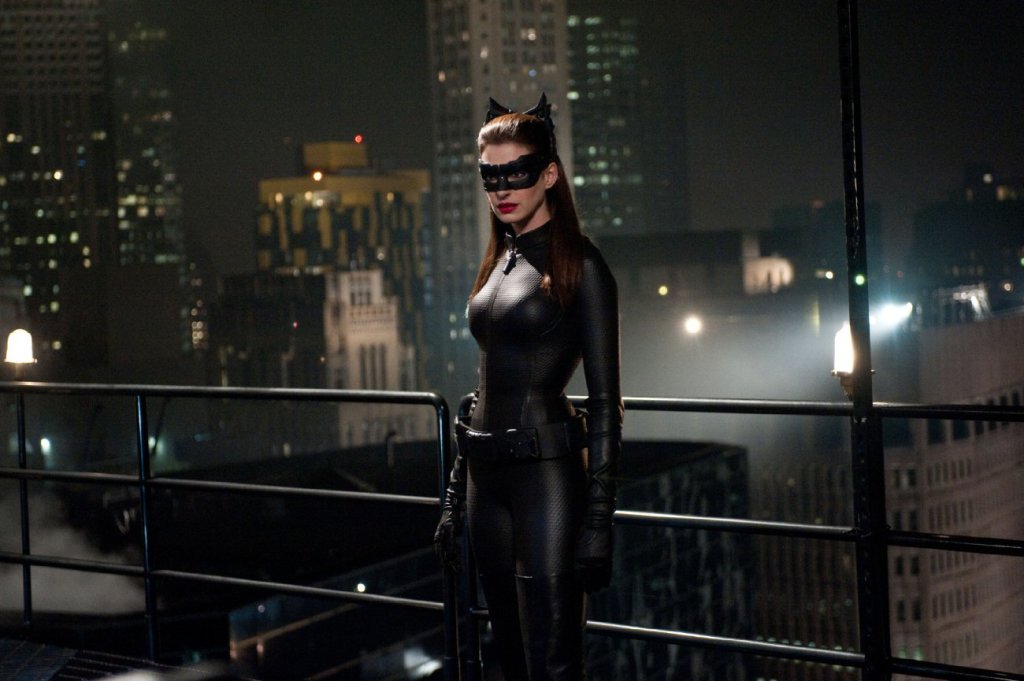
Anne Hathaway Does Not Reprise her Role as Selena Kyle in INTERSTELLAR, but here is a gratuitous picture of Catwoman, who also transcends space and time.
There are other critics who, I am simply astonished, dumbfounded and amazed, dislike the film because it shows longsuffering persistence in the face of despair, because it has a miraculously happy ending, but not so happy that all the scars and sacrifices vanish, or that the plot was more complicated than the average sitcom or adventure film.
Who takes a stand against courage, and complains that perseverance in the face of overwhelming odds is a bad thing?
There are, of course Leftists and Social Justice Warriors who condemn the film for praising love, an emotion they apparently hate. And the fact that one of the heroes is black, and two of the heroine women, whereas all the villains are old white men, they take as a deep and grievous insult against minorities. And they don’t like happy endings.
I am not so much puzzled by these reactions as repelled, as if I were seeing the face of a leper rotting in front of my eyes, and watching as first this teeth, then his eyes, tongue, nose and his face all fall into his lap. These criticisms, mocking love, courage, heroism and happiness, strike me not so much as insane as purely and hellishly evil.
The critics who could not follow the plot are simply stupid. I did not find it confusing or hard to follow in the least, but then again, I read science fiction, whose authors pitch their intellectual tone at a slightly higher level than where the average Leftist or Social Justice Nag feels comfortable.
What else? As a science fiction fan, I was grateful for small realistic touches, such as that the ship was spun for gravity, or that the robots looked like walking bricks rather than manikins. I was grateful for scenes photographed in zero gee like those of APOLLO 13 that actually looked like zero gee. I was grateful for the humor value of the humor setting on the robot. I was amused when Cooper discovers who it is that Cooper’s Station is named after. I was pleased when we discover who the figures delivering the flashbacks in the opening are.
I was immensely pleased by the portrayal of alien planets that were actually alien, including things that were unexpected, such as vast waves that never crested on one world, or frozen structures like clouds or palm fronds extending hundreds of feet into the atmosphere on another. There was no scene like in STAR TREK, or, more to the point, like in GALAXY QUEST, where astronauts are wandering around in their shirtsleeves in a world that looks like Tunisia, or Southern California, or the Amazon jungle. The worlds here looked strange enough to be alien, but familiar enough to be realistic: a very difficult balance to hit.
Let me end by praising the directorial decision to portray space as silent. Aside from theme music, there is only one scene where the audience sees the starship from outside not in an eerie silence, and that is when one of the astronauts has just plugged in his soothing ‘sounds of nature’ track into his headphones. We see the tiny scrap of human life in a spinning craft, smaller than a speck against the immensity of Saturn cast his mighty shadow over his immense ring system, and meanwhile raindrops patter and crickets chirp in the background.

